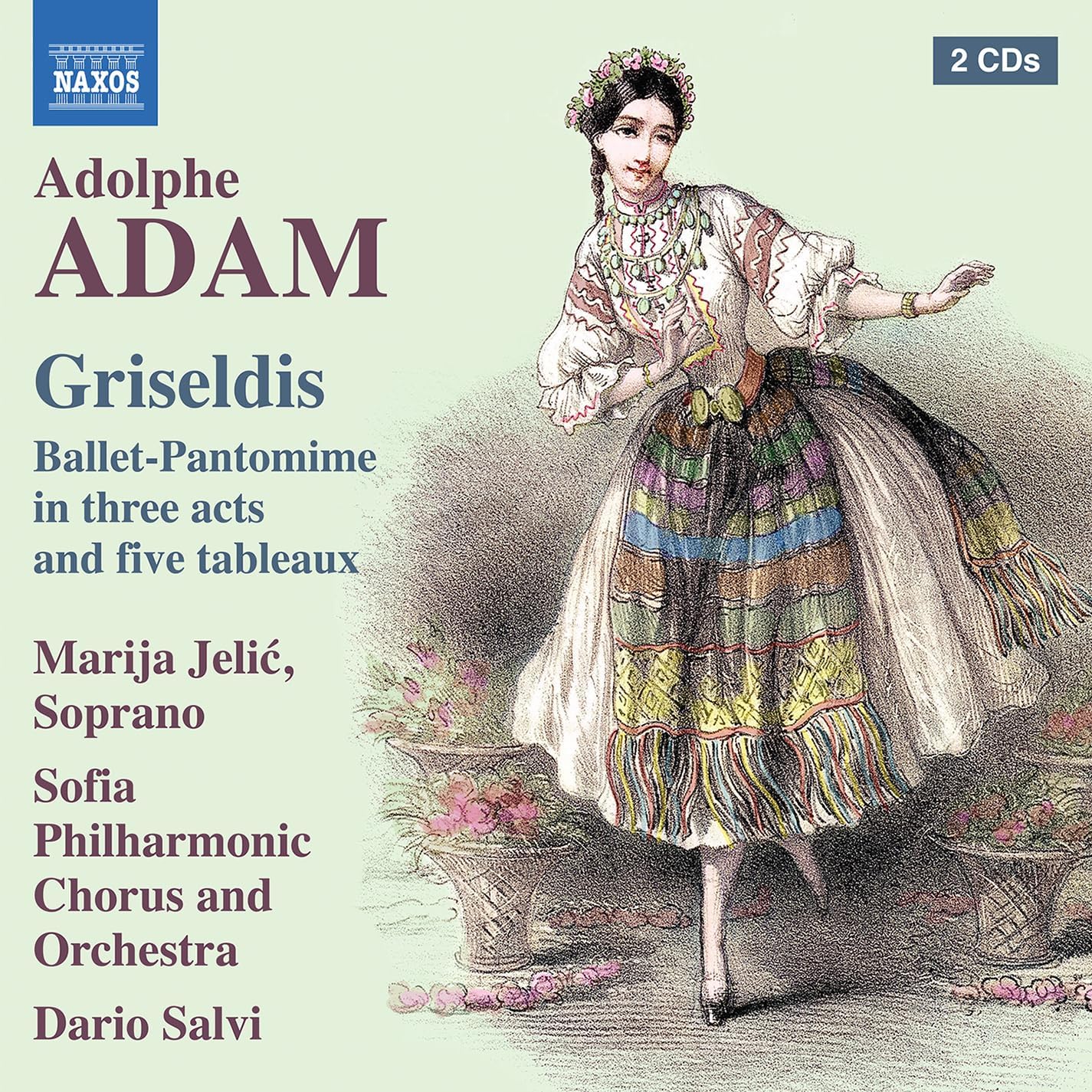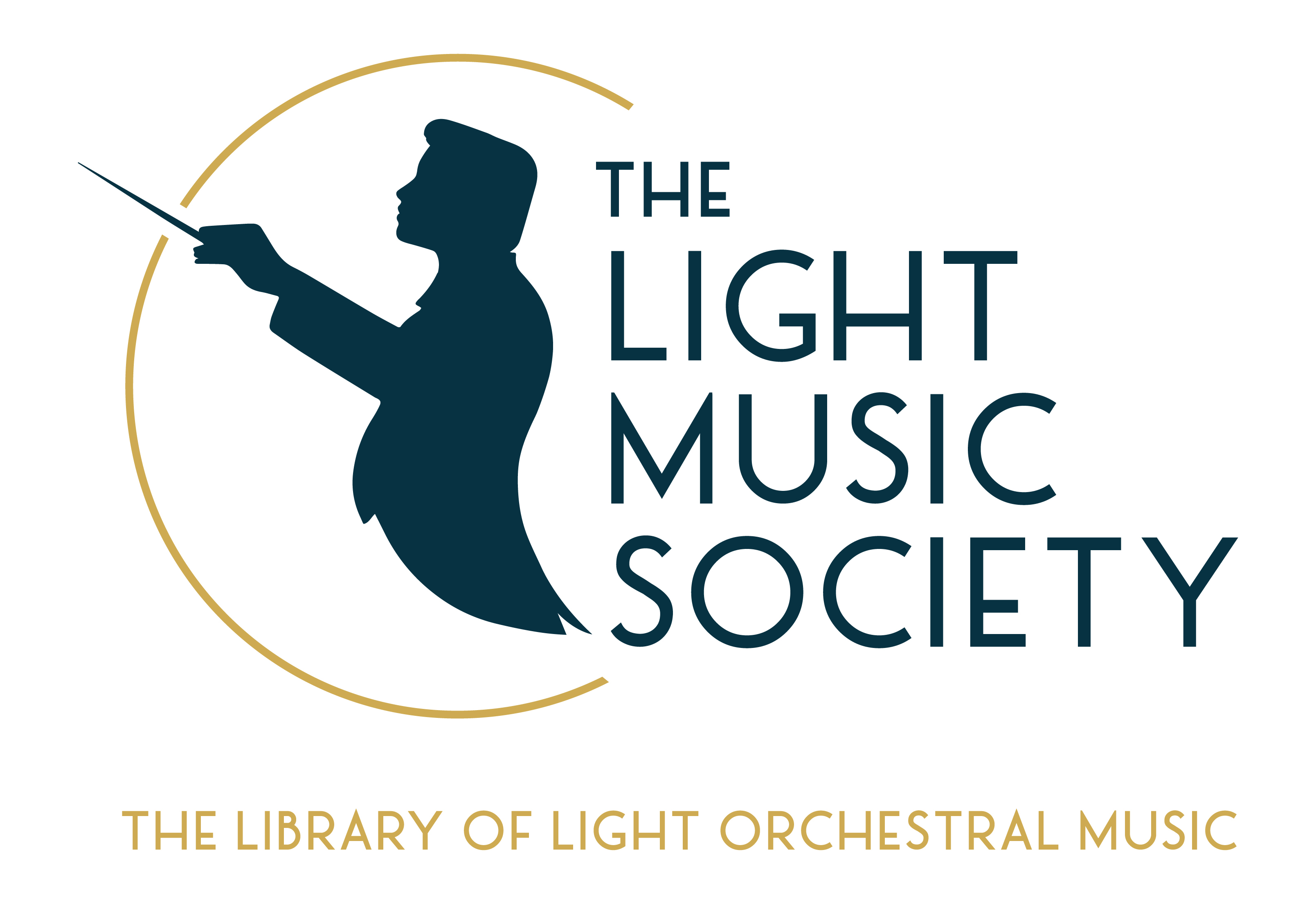Adolphe Adam: Griseldis
Sofia Philharmonic
Marija Jelic (Soprano)
Conducted by Dario Salvi
Naxos
Undoubtedly best known for the ballets Giselle and Le Corsaire, Adolphe Adam was an incredibly prolific writer for the stage. However, despite being the toast of Paris for Griseldis, for some reason this ballet seems to have disappeared from the repertoire. On the basis of this recording, such a turn of events seems somewhat surprising, as it sounds to have been quite the impressive night at the theatre.
The introduction instantly tells the listener they’re in for something rather different: an arresting opening drum roll that builds a small motif from barely audible to something much more intense, before the orchestra gives way entirely to an a cappella chorus (presumably offstage in its original staging).
The ballet tells the curious story of Prince Elfrid of Bohemia, who, disillusioned with life and depressed at the notion of his upcoming arranged marriage, encounters Griseldis, princess of Moldova (disguised as a shepherdess) and undergoes a sensory awakening as he realises his love for her. Each tableau in fact is based on one of the five senses: the first being sight, when he spies Griseldis, progressing through, sound, touch, taste and smell before arriving at the final scene subtitled “Insight”.
Musically, there is an argument for Griseldis falling between two stools: inventive and forward-looking at times, whilst really very conventional in others. The inclusion of voices and interesting use of the idée fixe to signal the presence of Princess Griseldis is an impressive innovation, while there are some truly lovely pieces of orchestral scene setting once the action moves to the Moldovan countryside, some of which seem somewhat folk influenced, although it is a musical language far removed from the music of Moldova. The drama is slightly uneven, with longer being given to the fourth of the five tableaux than any of the others. This does not seem to have bothered critics of the time, however, who clearly found the combination of the music and spectacle more than made up for the uneven lengths of the scenes. The previous scene lasts a mere fifteen minutes, but we are presented in tableau 3 with what sounds to my ear like an impressive set of variations (even if it does rather run out of steam toward the end and seemingly not know where to stop!).
The recording itself is also something of a mixed bag. Salvi and the Sofia Philharmonic must now be very familiar with one another given how many recordings they have produced together and it is the orchestra that shines on this recording. As usual, Salvi is at pains to preserve as close to a ‘period’ rendering of the music as possible, without allowing the tempi to rush, even if there was a spot in the Tableau four Waltz of the Gardeners that I felt a little more of a sprightly pace might have been welcome. Other moments I found more frustrating and wished they were better done. After the exciting opening orchestral flourish for example, the chorus then enters and proceeds to lose pitch by the end of their very first introductory phrase, a fault they would perhaps get away with were it not for the forte re-entry of the orchestra revealing the lapse in intonation.

Furthermore, the “chorus” seems to be a very small group indeed (I’d be surprised if there were more than eight singers) and as a result are far more closely miked than the orchestra with the effect that the close harmony singing sounds bizarrely closer to a barbershop quartet than a theatrical chorus. With a little “offstage echo” added to their work, the opening of the work would feel far less fragmentary and one could even have more readily overlooked the tuning issues. Soprano Marija Jelic takes the vocal line of Griseldis, some of which would impressively been sung by the dancer in the original cast, while other sections would have been taken by an offstage singer. Jelic has a fine operatic voice, clearly suited to the Verdi and Puccini roles one finds on her CV, though arguably less suited to the lighter side of the French repertoire such as this. More problematic is the fact she should clearly be accompanied by a theatrical organ, which evidently wasn’t available here and so the listener is subjected to some kind of electronic input, which really doesn’t work. The result, therefore, is that we have a talented singer doing their very best with the repertoire, whilst accompanied by a really quite unpleasant noise.
It is worth noting, however, that part of the reason that these moments stand out is because they are so noticeable in an otherwise very fine recording. It is always interesting to listen to a ballet score in isolation, as it is such a visual medium (more so than opera, for instance) and one can imagine Griseldis being quite the visual spectacle on stage, meaning it is easy to account for its one time popularity. For me, while the recording did reveal one or two longueurs in the score, the present release makes a very persuasive case for the possibilities of successful restagings, were a company or house willing to take the plunge. The fact that it has also entered the UK classical charts shortly after its release will I’m sure also demonstrate the strengths of this surprisingly little known charm-filled score.

Leave a Comment
I hope you enjoyed this post. If you would like to, please leave a comment below.